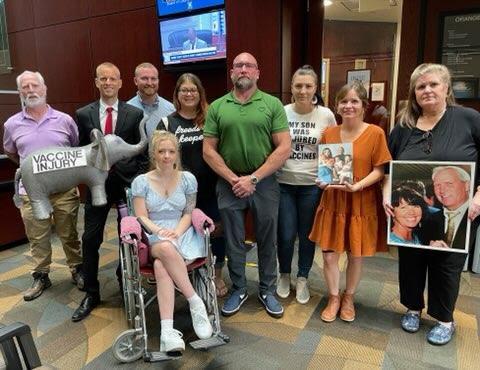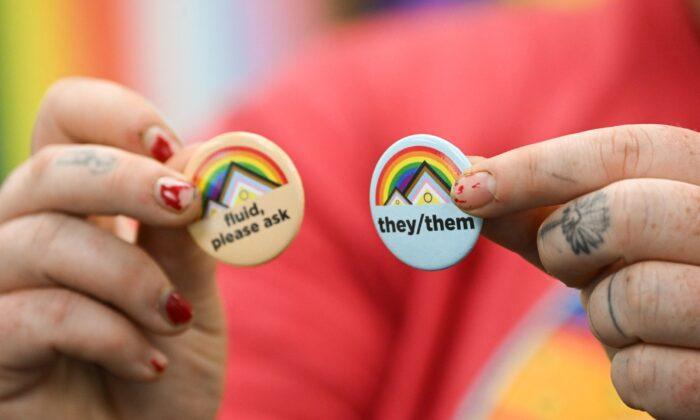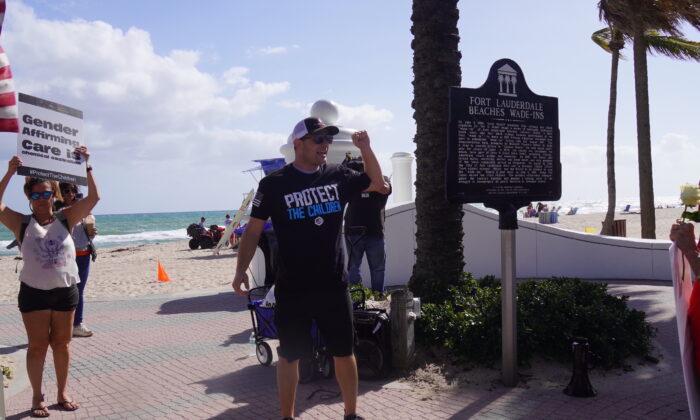BIRMINGHAM, Ala.—A workplace accident changed Christopher Thornton’s life, but he found hope through the miracle of prosthetics and one limb maker, Brian Horton.
Thornton was involved in a forklift accident almost three years ago, he told The Epoch Times in an interview on July 10. After three operations, he was faced with a life-altering decision: an amputation.
He forced himself to watch his children from the sidelines as they participated in school activities, “not being able to help them practice for a little more than two years,” he said.
“I was on crutches for 2 1/2 years,” he said with tears welling in his eyes. “I lost 2 1/2 years of my life.

Before his accident, Thornton said he was an avid hunter and fisherman.
He said with Horton’s help he has “learned to adapt” and has found new ways to enjoy old hobbies.
“I started back hunting. I’m starting to fish again,” he said of his changed life. “Getting in the boat was tricky—but I figured out how to do it.”
He admitted most of his successes with learning how to manage a prosthetic have been “trial and error” and finding his “new normal.”
“You do one thing, you know, you figure it out,” he said. “You do it right the next time.”
Thornton has a goal to get back into a deer stand by the fall and winter deer hunting season. Stands can range from 15 to 20 feet high in trees in the deep Alabama woods where, he said, “no one can hear you scream for help.”
He said none of the things that he’s able to do now would be possible without the “miracle” of his prosthetic.
They attribute this to three main causes, the most common being vascular disease, which affects 54 percent of those with diabetes, peripheral arterial disease (PAD), and blood clots.
Any of these results in poor blood flow to the limbs, the coalition says on its website.
“This can cause pain, tissue damage, and wounds that don’t heal correctly, which over time, may lead to amputation,” the website states.
“Black Americans are up to four times more likely to face amputation than white Americans because of an increased risk of diabetes and PAD.”

He said he began his work with prosthetics in the late 1980s when amputees were “pretty much relegated to crutches and wheelchairs.”
But a group of doctors visiting the small hospital where he was working at the time came armed with prosthetics that closely emulated missing limbs.
“I was working in a hospital setting for a vascular surgeon with amputees,” he recalled during an Epoch Times visit to his office in Birmingham. “I was doing strengthening and wound care when I met those guys.”
He said the prosthetic group would visit the small hospital once a week, and Horton found himself working with them on a regular basis.
“That’s how I learned,” he said. “Prosthetics was made for me, or either I was made for prosthetics. I can’t imagine doing anything else.
“I knew right then that’s what I wanted to do.”
Seeing patients bedridden from “one day to the next” weighed on Horton, and he began to see the difference that prosthetics were making in people’s lives, especially teenagers, he said.
“As a teenager and losing their leg, you’re thinking, man, this is bad,” he said. “But, with prosthetics, it’s just really a new beginning, and it’s really not the end of anything—just a new way of living.”
Horton’s goal for patients who have lost limbs is to allow them to “live a normal life,” and said that as technology progresses, so does the world of prosthetics.
He encourages those who are looking to help others to lead a more productive life after losing a limb, to look into the world of prosthetics and orthotics.
“It can be lucrative —both financially as well as personally rewarding,” he said.
“The demand for orthotists and prosthetists is high. Baby boomers are going to physicians in large numbers due to arthritis and diabetes.”




